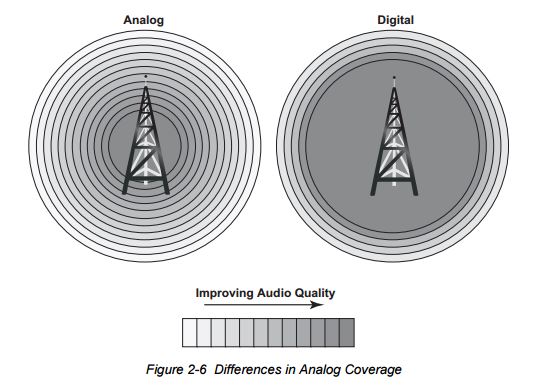Welcome to another digital voice resource for ham radio operators. The goal of this site is to be educational and informative for all things revolving around digital voice in the amateur radio hobby. New to Ham Radio? Click HERE to get started.
Updated: 07/11/2022
Why Digital Voice?

It’s a natural progression of radio. Consider it evolution of RF rather than change. Way back in the day, AM was the defacto modulation type. AM was noisy, but it got the job done. In the 1930s the FM modulation type was invented and introduced into Radio. FM helped solve for the shortcomings prominent in AM, like noise/static. For decades FM ruled the radio world and still does in many cases, but more and more commercial companies are making the leap to digital which helps drive a lot of the amateur radio hobby.
Digital voice is a transmission of data rather than raw analog voice. The data payload sent with your voice can often carry identification information (like your call sign), GPS coordinates, short messages (Like texting), and even computer data. This data paired with the forward error correction that each mode utilizes makes for an efficient use of air time and often eases the users radio experience. Digital voice repeaters are designed to connect to IP networks (most have Ethernet jacks in them), which makes internet linking radio systems extremely easy allowing people to connect all over the world via ham radio.
Prices are coming down on radios, especially in the used market. Hams around the world are building cool new tools and accessories, tinkering with this new frontier of radio. I urge you to take the dive into digital voice, no matter what mode you choose and give it a whirl.
Current Popular Digital Voice Modes:
Comparison Chart
| Mode | Analog | D-Star | DMR | Yaesu System Fusion |
|---|---|---|---|---|
| Networks | IRLP, ECO-LINK, All-Star | REF, XLX, DCS | Brandmeister, DMR-MARC, TGIF, Many many others... | Wires-X, YSF, FCS |
| Server Nomenclature | Reflector | Reflector | Talk Group | Room, Reflector |
| Network Interaction | DTMF | "URCALL" Field | Contact or channel selection | Dx Button, DTMF |
| Signal Validation | TONE, Tone-Squelch | RPT 1 (only for repeaters) | Color Code | N/A |
| Modulation | FM | GMSK | 4-state FSK with TDMA | C4FM |
| Creator | N/A | JARL | ETSI | Yaesu |
| Verbal ID Required? | Yes | No | Yes (if your radio doesnt support "Talker Alias") | No |
What the digital voice modes sound like to analog radios.
Feature Comparison
| Feature | D-Star | Yaesu System Fusion | DMR |
|---|---|---|---|
| Link directly to users (Networked callsign routing) | Yes | No | Yes |
| Link to repeaters directly | Yes | Yes | Yes |
| Text Messaging | No | Sort of, Must be in GM mode. | Yes |
| GPS bearing of RX station on radio | Yes | Yes | No, Only Anytone's radios can when setup properly. |
| Vendor locked | Yes, sort of, Icom and 1 Kenwood radio | Yes, Yaesu only | No |
| Auto switches between Analog and Digital | Yes, sort of, after ~10seconds | Yes, Instantly | Yes, only with certain model radios |
| Lone worker | No | No | Yes |
| Man down | No | No | Yes |
| TX/RX Computer data | Yes | Not yet. | Only certain commercial vendors and radio models |
| Can build your own network | Yes | No, only when using WIRES-X (Closed Source) | Yes |
| Repeater Roaming | No | No | Yes |
| Can work on HF | Yes | Yes | No (~900 mile limit because of time syncing latency) |